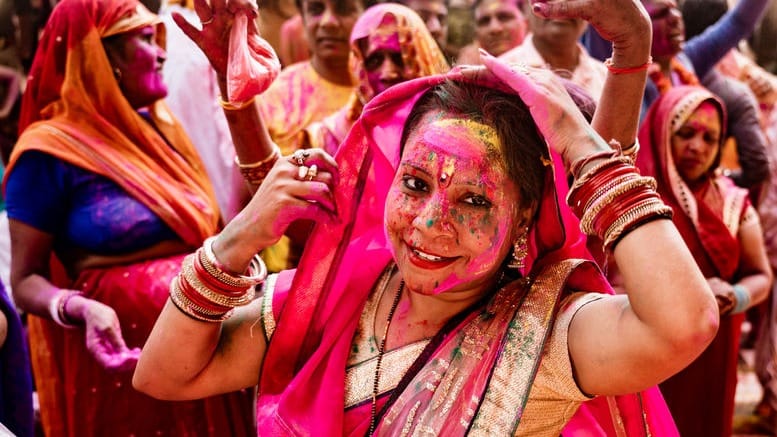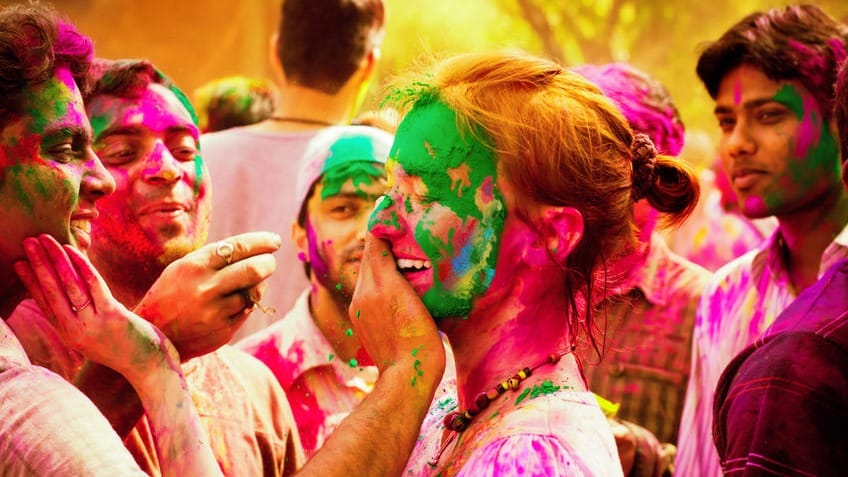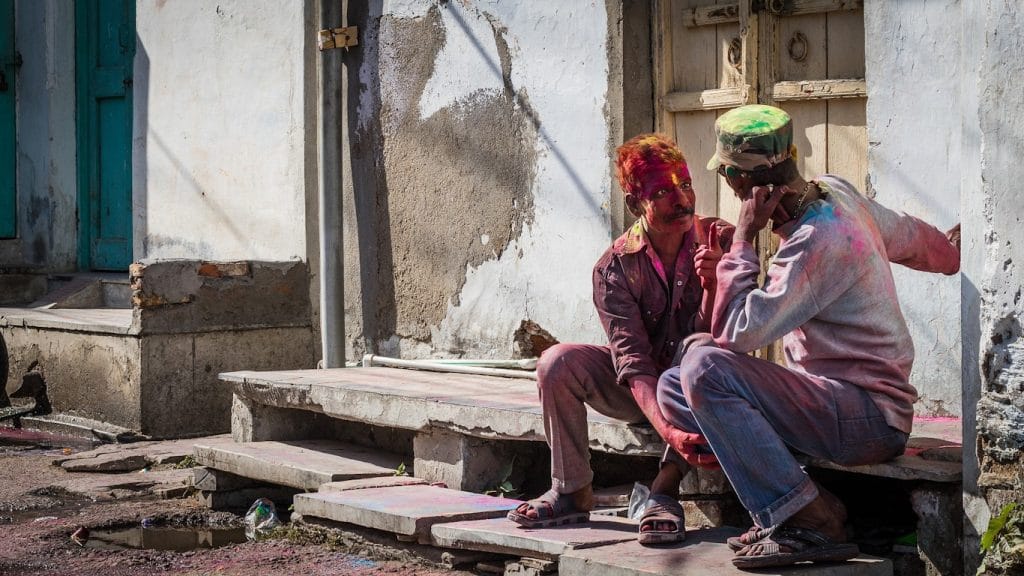Holi Festival, India's most joyful festival
A different way to get to know India is to visit during the Holi festival, a celebration of love and color that welcomes spring and celebrates the victory of good over evil.
Holi is an ancient religious festival that has become popular, in addition to Indiais also active in the Indian community in Nepal, in many regions of Asia, as well as among various communities of Indian origin in different parts of the world.
The celebration of this festival begins with Holika Dahana, on the night of the full moon of the eleventh month of the Hindu calendar and continues until the following day, with Rangwali Holi (better known as Holi).
I tell you about the rituals and legends that give rise to these two celebrations that make up the Holi festival.

Holika Dahana: night of bonfires to burn the evil.
Legend has it that Holika was the aunt of Prince Prahlada and sister of King Hiranyakashipu. The latter received a series of powers and became blinded by the idea that he was the only god whom the people should worship. In spite of this Prahlada, her son, refused to worship him and continued to venerate the god Vishnu, a Hindu deity that, together with Brahma and Shiva, form what is known as trimurti or trinity. This attitude greatly angered his father, who decided to punish him in a cruel way, but Prahlada still continued to worship Vishnu, as was traditionally done.
When Holika saw that the punishment did not change her nephew's attitude, she believed that the only solution was to kill him with a deadly trap. She invited him to sit next to her on a pyre, Holika wore a magic mantle that protected her from the fire, but as if it were a miracle, the mantle protected the prince while his aunt died in the flames of her death trap. Then Vishnu appeared and ended Hiranyakashipu's life, thus punishing his arrogance and wickedness.
Since then, every year the eve of Holi celebrates the victory of good over evil. Bonfires are prepared in the streets and its people sing and dance burning their mistakes and forgiving the mistakes of others.
Rangwali Holi: the festival of color and love
Holi begins the morning after the night of bonfires. On this day, India is dyed in color and the streets of the country are filled with people throwing colored powder (Gulal) and dyed water. This festival celebrates love, with its origin in the legend of Krishna and Radha and the arrival of spring, where the colors simulate those of the flowers to sprout.
Legend has it that the God Krishna felt great concern about the bluish color of his skin, which was due to his being poisoned by Putana with his mother's milk. This difference in color tormented Krishna, thinking that Radha would not like him. In desperation, he asked his mother for advice and she told him that if he painted Radha's face colors, he would not feel any different. The story of their love is well known in India, and Since then, couples have been playing face painting during Holi, celebrating Love!!

Colors at the Holi Festival
Originally they used only colored powders made from natural extracts extracted from plants, roots and spices. The color mixture is made up of several basic colors, each with its corresponding symbolism. Red symbolizes love and fertility; blue, the color of Krishna; yellow, turmeric; and green symbolizes spring, new beginnings and hope..
Canvases with colors of equality
In a country dominated by social barriers among its people, for one day no one remembers the differences between rich and poor and everyone fills the streets of the country to celebrate this day together and share their joy..

The spiritual significance of Holi in India is based on redemption. It is a day to forget and forgive the mistakes of the past. A party where you will enjoy to the maximum the atmosphere generated in the most important cities of the country as Jaipur or Mathura, Krishna's birthplace, where a special ceremony and offering is made to Krishna on this day.
The different celebrations of the Holi Festival
Holi in the land of Krishna and Radha
Uttar Pradesh is the state where the Holi festival is experienced in a more intense and varied way as it is the area of Krishna and Radha.
What is called Braj Holi (Braj is an area of Uttar Pradesh) lasts about 40 days and is mostly celebrated in Mathura, Vrindavan and Barsana.
Read on and discover the most curious Holi celebrations in Braj.
Laddoo Holi
This celebration kicks off the Holi celebrations in Uttar Pradesh, in the Braj Bhoomi area.
Legend has it that Krishna's father was invited to the city of Barsana to celebrate Holi. Upon his arrival, the Pandit was waiting to welcome him with sweets, including the popular and delicious Laddoos. Just afterwards, children arrived and threw colored Holi powder at him, as he was deprived of colors to attack with, took the Laddoos and threw them at him...thus giving birth to what is known today as Laddoo Holi.
Lathmar Holi
The Lathmar Holi, also known as Holi of sticks/rods is celebrated in the cities of Radha in Barsana, and Krishna in Nandgaon.
This celebration is a recreation of the legend of Radha and Krishna, in which the Krishna comes to Radha's city to spray her in color and play for Holi but she and her friends in playful attitude receive them with sticks to expel them from their area. Every year the women take to the streets dressed with sticks and replicate Radha's action with the men of the city.
A very curious Holi celebration that you will only be able to see in these two cities, in each one a different day is celebrated and both are always before the official Holi day.
Phoolon Wali Holi
This celebration takes place in Vrindavan. Phool means Flower and the main difference is that instead of colored powder, colored flowers are thrown. The festival begins at the Banke Bihar Temple where the Pandit throws the first flowers and then the floral madness begins 🙂
I hope you liked this article about the Holi festival and if you have the opportunity don't miss it at least once in your life 🙂
Did you like this article? You can leave your comments and questions here - we'll be in touch!

